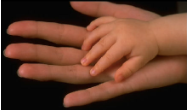- Escambia County Public Schools
- Biology End of Course Review
- SC.912.L.16.13 Reproductive System
Science
Page Navigation
- Home
- Elementary Science Curriculum
-
Biology End of Course Review
- Biology EOC Review
- SC.912.N.1.1 Scientific Method
- SC.912.L.18.12 Properties of Water
- SC.912.l.18.9 Photosynthesis and Cellular Respiration
- SC.912.L.18.1 Macromolecules
- SC.912.L.16.17 Mitosis and Meiosis
- SC.912.L.16.3 DNA Replication
- SC.912.L.14.3 Cell Structure
- SC.912.L.14.1 Cell Theory
- SC.912.L.17.20 Human Impact
- SC.912.L.17.9 Food Webs and Energy Transfer
- SC.912.L.17.5 Population Size
- SC.912.L.16.13 Reproductive System
- SC.912.L.16.10 Biotechnology
- SC.912.L.14.52 Immune System
- SC.912.L.14.36 Cardiovascular System
- SC.912.L.14.26 The Brain
- SC.912.L.14.7 Plant Structure
- SC.912.L.16.1 Genetics
- SC.912.L.15.13 Natural Selection
- SC.912.L.15.8 Origin of Life
- SC.912.l.15.6 Classification
- SC.912.L.15.1 Evolution
SC.912.L.16.13 Reproductive System
ORGANISMS, POPULATIONS AND ECOSYSTEMS
CLASSIFICATION, HEREDITY AND EVOLUTION
WHAT YOU NEED TO KNOW
-
- You need to know the basic anatomy and physiology of the human reproductive system.
- You need to know the process of human development from zygote to birth.
- For the male reproductive system, you will need to know the seminal vesicle, prostate gland, vas deferens, urethra, epididymis, scrotum, penis, and testes.
- For the female reproductive system, you will need to know the ovaries, oviduct (fallopian tube), uterus, cervix, and vagina.
EXAMPLE ONE
-
A fertilized egg undergoes several stages before it is successfully implanted. The diagram below shows these stages as the fertilized egg travels through the female reproductive system.
In which of the following structures of the female human reproductive system is the blastocyst implanted during normal human development?
A. ovary
B. uterus
C. vagina
D. amniotic sac
EXAMPLE TWO
-
The drinking of alcoholic beverages by a pregnant woman is harmful to the development of her fetus. This is most damaging early in a pregnancy because during this time
A. the lungs of the fetus become functional.
B. alcohol can easily enter the mouth of the fetus.
C. many of the essential organs of the fetus are forming.
D. the fetus cannot excrete wastes.
EXAMPLE THREE
-
Sperm are created through meiosis in an area of the testes called the seminiferous tubules. Through which structure do the sperm travel to exit the testes?
A. vas deferens
B. seminiferous tubules
C. scrotoum
D. epididymis
EXAMPLE FOUR
-
Which of the following is true of a zygote?
A. It forms into a blastocyst
B. It is an unfertilized egg
C. It produces haploid male gametophytes
D. It is made up of only one cell
EXAMPLE FIVE
-
Which of the following describes fertilization?
A. cell differentiation to form a blastula
B. formation of germ layers in a deuterostome
C. a sperm joining an egg to form a zygote
D. sperm and egg production
EXAMPLE SIX
-
Below is a diagram of the male reproductive system.
Which structure is represented by the letter D?
A. scrotum
B. testes
C. prostate gland
D. epididymus
EXAMPLE SEVEN
-
Abnormalities present in the cells that line the uterus may prevent the production of offspring by directly interfering with which process?
A. the development of the embryo
B. the differentiation of gametes into zygotes
C. the secretion of estrogen by the ovary
D. the production and release of egg cells
EXAMPLE EIGHT
-
What is the human embryo called after the eighth week of development?
A. a zygote
B. an infant
C. a fetus
D. a morula
THE REPRODUCTIVE SYSTEM
FERTILIZATION & DEVELOPMENT
IN YOUR BOOK
-
General Biology - Chapter 34, pg. 786
Honors Biology - Sections 34.3 and 34.4, pgs. 817-828




